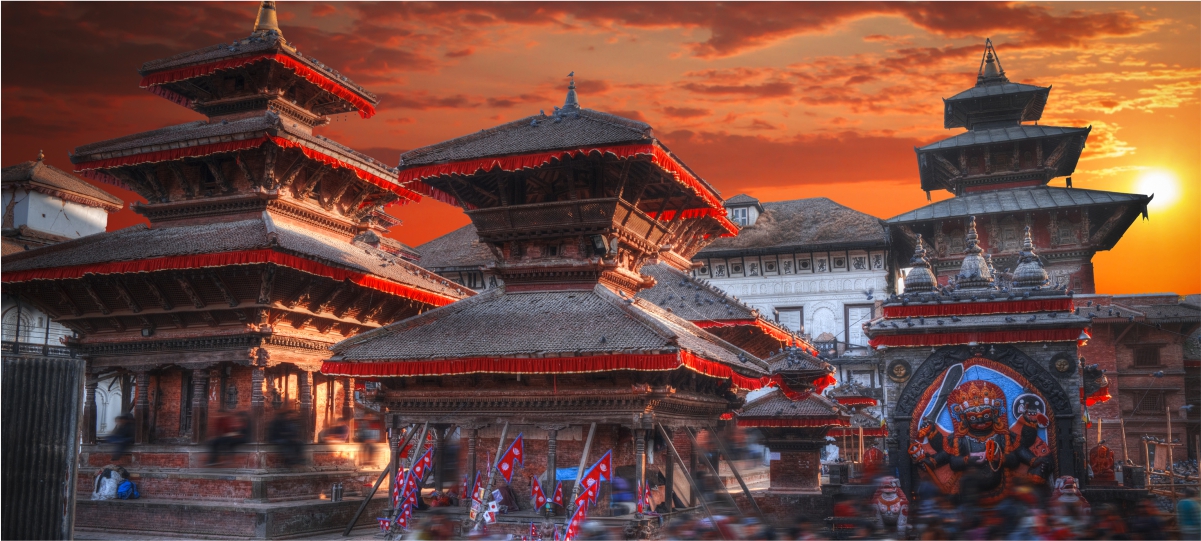Travel Tips - Nepal
Time Zone
GMT + 5 hours 45 minutes
Language
The official language of Nepal is Nepali but Hindi is also understood.
Staff at airlines, railway, telecommunication counters and offices are usually fluent in English. Most direction signs usually have an English version too.
Religion
Nepal is a secular country with Hinduism being the primarily followed religion followed by Buddhism. However, Nepal being a diverse nation also has practising Muslims, Kirats, Christians, Sikhs and Jains.
Currency
The units of Nepalese currency are the Nepalese Rupee and Paisa (100 Paisa equal 1 Rupee). Paper money is in denominations of Rupees 5, 10, 20, 50, 100, 500 and 1000 (रु5, रु10, रु20, रु50, रु100, रु500, रु1000). Coins are in denominations of Rupees 1 and 2 (रु1, रु2).
Tipping
Tipping is not customary, but it is appreciated nevertheless.
Weather
Best time to go Nepal
The weather in Nepal varies by region and altitude. In the north, summers are cool and winters severe, while in the southern part of the country, summers are tropical and winters are mild. Nepal has five major seasons: spring, summer, monsoon, autumn and winter. Monsoon season lasts from approximately the end of June to the middle of September. Spring and autumn are the most pleasant seasons; winter temperatures drop to freezing, with a high level of snowfall in the mountains, while summer can be blisteringly hot. Summer and late spring temperatures range from 83ºF in the hill regions to more than 104ºF in the southern Terai region. The valley of Kathmandu has a pleasant climate ranging from 67-81ºF in summer to 36-68ºF in winter. In general, March through June and mid-September to November tend to be fairly dry and pleasant throughout the country.
Best value time:
May to September
Clothing
Daytime attire: Varied topography and high altitudes in Nepal create weather conditions which can change radically in the course of the day, and between daytime and night-time. Bring fabrics that can breathe and you can wear in layers. Women may feel most comfortable in skirts or long trousers. Dress conservatively when visiting temples, monasteries and dzongs - shorts and tank tops are not allowed inside.
Evening attire: Smart casual clothing is appropriate for evening dining in city restaurants. Formal clothing is not necessary.
Visitors to national parks and wildlife reserves should note that in any season, it is advisable to wear comfortable, walking shoes with low or no heels.
When travelling during winter months, from late November to March, it is highly recommended to carry warm clothes, hat, gloves and thermals.
If your tour itinerary includes trekking/camping, bring a pair of lightweight well-broken-in hiking boots and thick socks (not essential for tour programs which include short – day hikes).
Health
For up to date information on latest health and vaccination recommendations, please contact your doctor.
Electricity
Nepal supplies electricity at 220 volts and 50 hertz. Be sure to pack a universal travel adapter.
Arrival and Departure Formalities
All visitors must have valid passports stamped with current visas (Visa can be obtained on arrival).
In Nepal, there is a restriction in the export of antiques, including foreign-made artifacts and items more than 100 years old.


